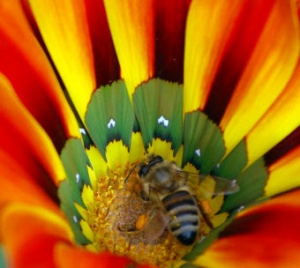Classifying and organising living things using images: Difference between revisions
JanetBlair (talk | contribs) (added .odp extension to slideshow) |
JanetBlair (talk | contribs) (removed the word File) |
||
| Line 31: | Line 31: | ||
** preview the images here: [[Classifying and organising living things using images/images|preview for images of living things]] or | ** preview the images here: [[Classifying and organising living things using images/images|preview for images of living things]] or | ||
** view them as a [[Classifying_and_organising_living_things_using_images/slideshow|browser-based slideshow]], or | ** view them as a [[Classifying_and_organising_living_things_using_images/slideshow|browser-based slideshow]], or | ||
** an [[ | ** an [[living things slideshow.odp|open office slideshow]] | ||
** [[Classifying and organising living things using images/astronomy_images|preview astronomy images]] | ** [[Classifying and organising living things using images/astronomy_images|preview astronomy images]] | ||
}} | }} | ||
[[Category:Science]][[Category:Primary]][[Category:Image based activities]] [[Category:ICT]] [[Category:Photo story]] | [[Category:Science]][[Category:Primary]][[Category:Image based activities]] [[Category:ICT]] [[Category:Photo story]] | ||
Revision as of 17:08, 12 December 2012
Lesson idea. This lesson ideas asks students to sort images of living things into groups. They may do this on the computer using photo album software to organise the images, add labels or descriptions if appropriate. When that is done, students can think of other groups or categories to sort living things. The idea can also work as a lesson starter where you may want to use it to discuss points about classification in science.
Teaching approach. This lesson offers opportunities to explore ways to classify living things as well as characteristics which might be relevant, and how to address difficulties that may arise when trying to classify things in this way. The activity may be enhanced by the use of ICT(i) software (e.g. Picasa) but could be carried out with paper-based resources.
This lesson presents a good opportunity for small group work(ta) and some inquiry(ta) into how we classify; and why some classification methods might be more useful, or more scientifically interesting than others. There is also a good opportunity to use different sorts of questioning(ta); to encourage pupils to question each other; to engage in peer assessment(ta) and to focus discussion(ta) on the scientific method(ta) using key vocabulary(ta). (edit)
| Resource details | |
| Title | Classifying and organising living things using images |
| Topic | [[Topics/Living things|Living things]], [[Topics/Using images|Using images]] |
| Teaching approach | [[Teaching Approaches/Assessment|Assessment]], [[Teaching Approaches/Questioning|Questioning]], [[Teaching Approaches/Language|Language]], [[Teaching Approaches/Group work|Group work]], [[Teaching Approaches/Inquiry|Inquiry]], [[Teaching Approaches/Discussion|Discussion]], [[Teaching Approaches/Scientific method|Scientific method]] |
| Learning Objectives |
|
| Format / structure | An activity outline and photo collection. |
| Subject | [[Resources/Science|Science]] |
| Age of students / grade | [[Resources/Primary|Primary]] |
| Additional Resources/material needed | Access to computers or tablet will allow pupils to organise the images supplied using photo organization/slideshow software (such as Picasa). |
| Related ORBIT Wiki Resources |
|
| Files and resources to view and download |
|

